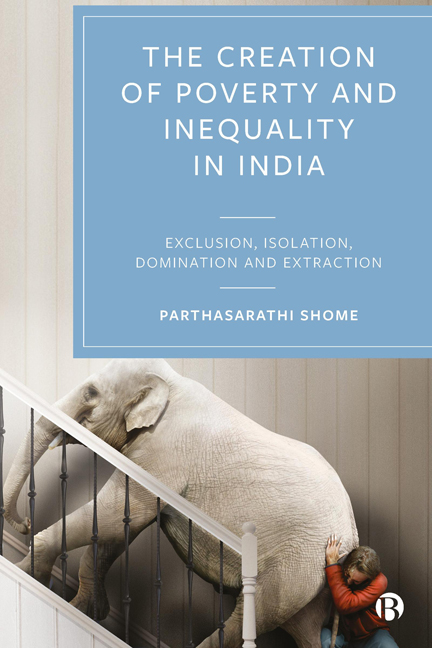Book contents
- Frontmatter
- Dedication
- Contents
- List of Figures and Tables
- Preface
- 1 Introduction
- Part I Macro-Economy and Human Development
- Part II Sources of Inequality and Poverty
- Part III Sectoral Effects
- Part IV Radical Humanism
- Appendix 2.1 Cash Use in India: A Cross-Country Comparison
- Appendix 2.2 Macro-Economic Comparisons: Selected Economies
- Appendix 4.1 Selected Country Tables
- Appendix 5.1 Evidence on Inequality in the US
- Appendix 8.1 Impact of Land Policy
- Appendix 11.1 Impact of Asset Transfer on the Poor
- Index
4 - National Income, Human Development and Inequality
Published online by Cambridge University Press: 18 January 2024
- Frontmatter
- Dedication
- Contents
- List of Figures and Tables
- Preface
- 1 Introduction
- Part I Macro-Economy and Human Development
- Part II Sources of Inequality and Poverty
- Part III Sectoral Effects
- Part IV Radical Humanism
- Appendix 2.1 Cash Use in India: A Cross-Country Comparison
- Appendix 2.2 Macro-Economic Comparisons: Selected Economies
- Appendix 4.1 Selected Country Tables
- Appendix 5.1 Evidence on Inequality in the US
- Appendix 8.1 Impact of Land Policy
- Appendix 11.1 Impact of Asset Transfer on the Poor
- Index
Summary
Introduction
India's growing inequality since economic liberalization and even earlier has been of increasing concern to fair-minded social scientists. Chancel and Piketty (2017) authored an analysis drawing attention to the issue. Drawing on this and subsequent and previous research carried out by various researchers, as well as the Human Development Report (HDR) published annually since 1990, this chapter examines the state and trajectory of inequality in India. It notes that, though India has made progress in the dimensions or components of the HDI, it has fallen behind comparable countries. It, therefore, needs to speed up if it were to achieve the United Nations’ Sustainable Development Goal (SDG) of ‘leaving no one behind’ by 2030 to which it is signatory.
Inequality indicators in India
India has experienced some success in its story of income growth, but a question remains as to the extent to which its income inequality has been addressed. Available data focuses on the above-20 age group as the incomegenerating section of the population. That comprised 351 million in 1980– 81, 778 million in 2013– 14, 810 million in 2015– 16 and 872 million in 2019– 20 reflecting the last available population data. What may be concluded from analysis is that there has been consistently worsening inequality when the averages of annual growth rates of group incomes for 1980– 2016 are examined.
From the state of the ‘bottom’ 50 per cent of this group, and even the next 40 per cent, that is, all but the top 10 per cent, there is little doubt that controlling income inequality remains the most intractable prevailing challenge for Indian society. Indeed, based on sporadic reports reflecting indirect indicators, the situation has been worsening and consistent updated data are eagerly awaited by domestic and international analysts alike.
Table 4.1 dissects income inequality over time. Between 1980– 81 and 2015– 16 (36 years), the share of national income declined significantly for the bottom 50 per cent population – from 23 per cent to 15 per cent – and for the next 40 per cent population – from 45 per cent to 29 per cent. Contrarily, it increased significantly for the top 10 per cent – from 7 per cent to 21 per cent– – as well as its component groups. However, interestingly, the numbers reveal that the degree of inequality on account of the top 1 per cent dipped between 2013– 14 and 2015– 16.
- Type
- Chapter
- Information
- The Creation of Poverty and Inequality in IndiaExclusion, Isolation, Domination and Extraction, pp. 75 - 96Publisher: Bristol University PressPrint publication year: 2023



